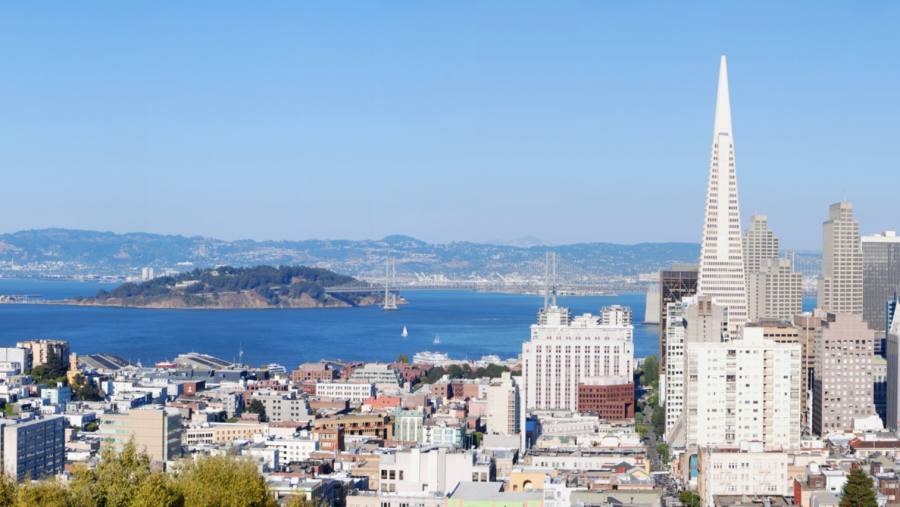
At the start of the year, Lindsey Bourne, 33, started looking for a new apartment to rent in Oakland, the city across the bay from San Francisco. She last moved in 2019. This time, she was looking for a larger apartment in a smarter neighbourhood. Her budget was between $2,500 and $2,800 per month, but she thought she might have to pay more.
In the aftermath of Covid lockdowns, rental prices across the country were climbing rapidly as residents flocked back to US cities. Would-be tenants reported that apartment viewings were crowded with other hopefuls, resulting in bidding wars and homes going under contract for far higher than their original list prices.
But while Bourne says that the viewings she went to were well attended, when she found a home she liked and submitted her first offer of $2,200 per month, the landlord accepted it straight away.
“I have doubled my square footage and this home has better light. I got what I wanted for way under my price range and I didn’t have to rush,” she says.
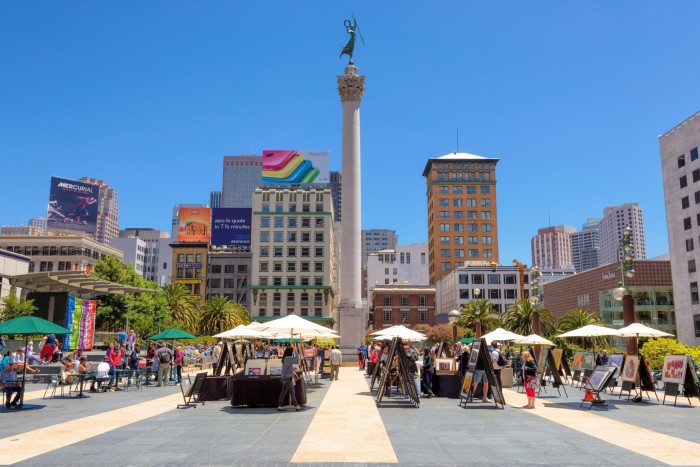
Rental price growth across the Bay Area’s three largest cities — San Francisco, Oakland and San Jose — has remained relatively subdued since the start of the pandemic. In September, the average rental price in San Francisco was 7 per cent higher than it was in March 2020, according to property portal Zillow; San Jose was up 9 per cent. The US city average was up 26 per cent.
While still among the most expensive cities to live in the US, before the pandemic, the average rental price in San Francisco was 10 per cent higher than in New York. In the summer, New York prices overtook those in San Francisco.
“Many of the technology workers who moved out of San Francisco when the pandemic hit to find cheaper places to live just haven’t moved back in,” says Patrick Carlisle, head of research at Compass, an estate agent. “On top of that there is increasing concern about crime and homelessness, especially in those areas where high-tech offices were clustered, but now remain mostly vacant.” Many of those who aren’t needed at their company desks are still choosing to rent or buy somewhere beyond the city.
Christina Trifero, a writer for a tech company in her late thirties, is among them. “I think I must have the best deal in the country,” she says of her 2,000 sq ft apartment in Outer Sunset, on the city’s western shore, near the Golden Gate Park, which she rents for $3,500 per month.
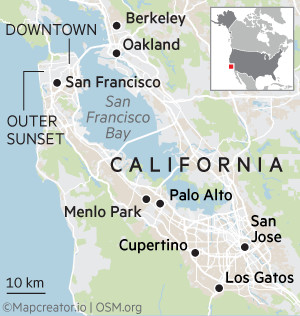
Nonetheless, she is making plans to leave the city after 14 years of living there. Her new employer, Zapier, has a mailbox in San Francisco, but no offices for its 800 employees, who work around the world in more than 40 countries. Trifero plans to spend a few months renting in Nashville, Tennessee, and St Petersburg, Florida, before she decides where to settle.
“I feel I’d gain being a renter in either of those places,” she says. “Landlords pay more care and attention to their homes than in San Francisco.”
Many of the Bay Area’s technology companies established remote working practices before the pandemic, and have generally been more accommodating of employees’ desires to continue working from home — although some, including Google and Uber, have asked workers to come back to the office for at least a few days a week.
At the end of last month, office attendance in San Francisco stood at 40 per cent, compared with the 48 per cent average of the 10 major US cities tracked by Kastle Systems, a US property security business. Office vacancies have risen faster in San Francisco than other major cities, according to the property company JLL; by the third quarter of 2022, one in four offices in the city was vacant.
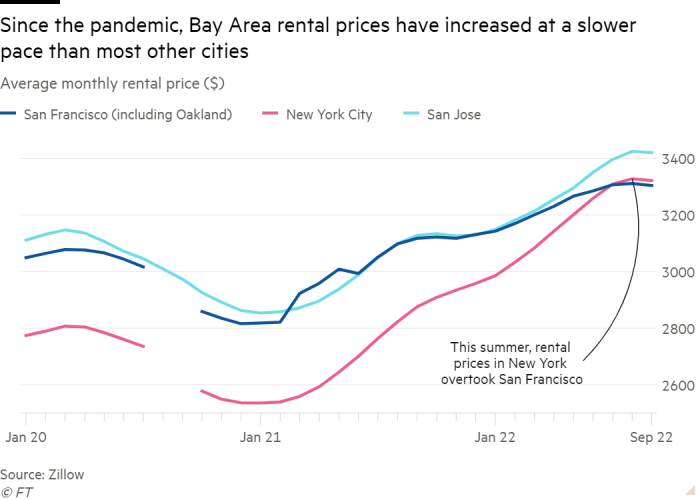
This has changed the atmosphere both in downtown and in the city more broadly, says Trifero, reducing its appeal. “It feels like the people that want to be in the office now are workaholics who aren’t in touch with their true soul. Working in the city seems to be a hustle. The energy was once laid-back, freethinking and entrepreneurial in spirit; now it feels like you’re more of a cog in a wheel.”
Before mortgage rates started rising in the US this year, many families took the chance to buy homes beyond San Francisco, abandoning the city’s punishing rental market.
“My husband and I are both on six-figure salaries but there is just no way we could afford to buy a house in Oakland or Berkeley — owning in San Francisco is even more ridiculous,” says Carissa Justice, 38, who left Oakland in late 2020, buying a home in Atlanta. The house has one more bedroom, a garden and far more space for the couple’s two young children. Justice says she has had no difficulty servicing the clients of her corporate branding business, most of which are based in San Francisco, from Georgia; she travels to the city every three or four months to visit them.
San Francisco home prices have fallen recently, dropping 8 per cent between their May high and October, according to Zillow. But at an average of $1.37mn, they remain among the highest in the US.
It isn’t just the housing that is cheaper beyond the Bay Area. This week the average price of a gallon of petrol in Atlanta was $3.26; the average in San Francisco was $5.65, according to AAA, the US motorists association.
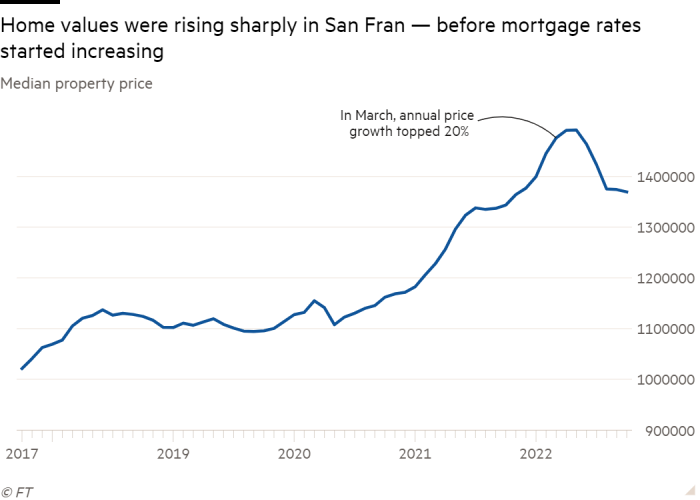
California’s high state taxes are another obstacle. Justice reckons the combined income tax for her and her husband fell by close to half following the move. Trifero estimates her take home pay after tax will increase by roughly $30,000 a year if she moves to Tennessee. (And Florida has no state income tax at all.)
Crime is a growing concern for some living in or near San Francisco. Total crime rates were up 7 per cent this year, according to the San Francisco Police Department dashboard, with increases in both robbery and assault.
Marcus Rocha, a TV cameraman, recently moved to Los Gatos, on the outskirts of San Jose, with his family. He often transports expensive camera equipment to and from shoots in San Francisco and is worried about crime in the city. “When I’m shooting at hotels there these days, the receptionist will always warn you not to leave anything in your car.”
He is also concerned about the city’s homelessness problem. Although homeless numbers have fallen in the past three years, many residents report that the drop in office workers has made the problem much more visible downtown and changed the character of parts of the city, too. “I’m just not sure I want [my children] to grow up around that; I’m not even sure I can handle it these days,” says Rocha.
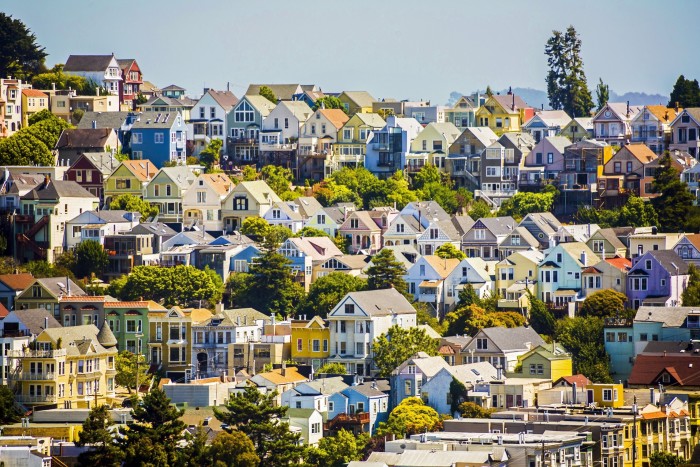
Growing challenges for San Francisco’s technology companies may keep a lid on demand for the city’s rental homes.
The Nasdaq Composite index, which includes many of the city and Bay Area’s most famous companies, has lost 34 per cent this year. In the face of the US economic slowdown, many of the area’s leading technology companies are cutting jobs. Last week, Twitter began a big redundancy drive under its new owner Elon Musk; Meta has announced large-scale lay-offs; ride-hailing app Lyft and online payments giant Stripe have also announced significant job losses.
The reluctance of tech workers to return to the office will mean many parts of the city continue to lack their pre-pandemic allure, meanwhile. Even under JLL’s best-case scenario, one in five San Francisco offices will still be vacant in 2026.
This bodes ill for the city economy. “Office-based industries generate nearly 75 per cent of San Francisco’s GDP,” wrote Ted Egan, chief economist of the City and County of San Francisco in a report to City Hall in October. “If expanded working from home does prove to be a permanent feature of work, it will impact virtually every aspect of San Francisco’s economy.”
Those starting to look for a new rental home in the city may feel, like Bourne, that they can take their time.
Buying guide
-
The median sale price for a two-bedroom condo in San Francisco’s downtown district fell 14 per cent in the year to October, compared with 4 per cent across the rest of the city, according to Compass, an estate agent.
-
Direct flights link San Francisco airport to New York in 5 hrs 30 mins and to Los Angeles in 1hr 30 mins.
Find out about our latest stories first — follow @FTProperty on Twitter or @ft_houseandhome on Instagram